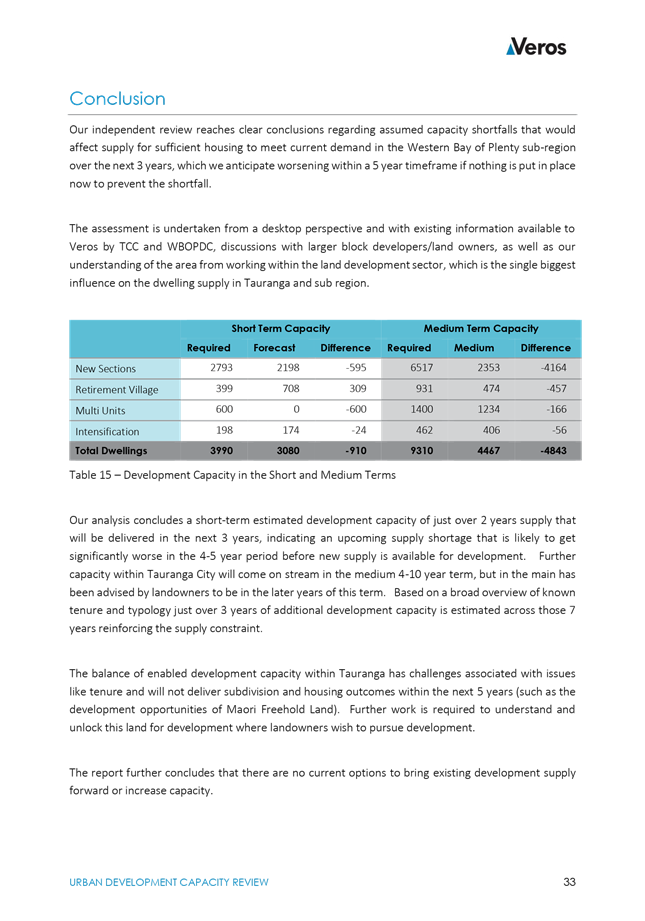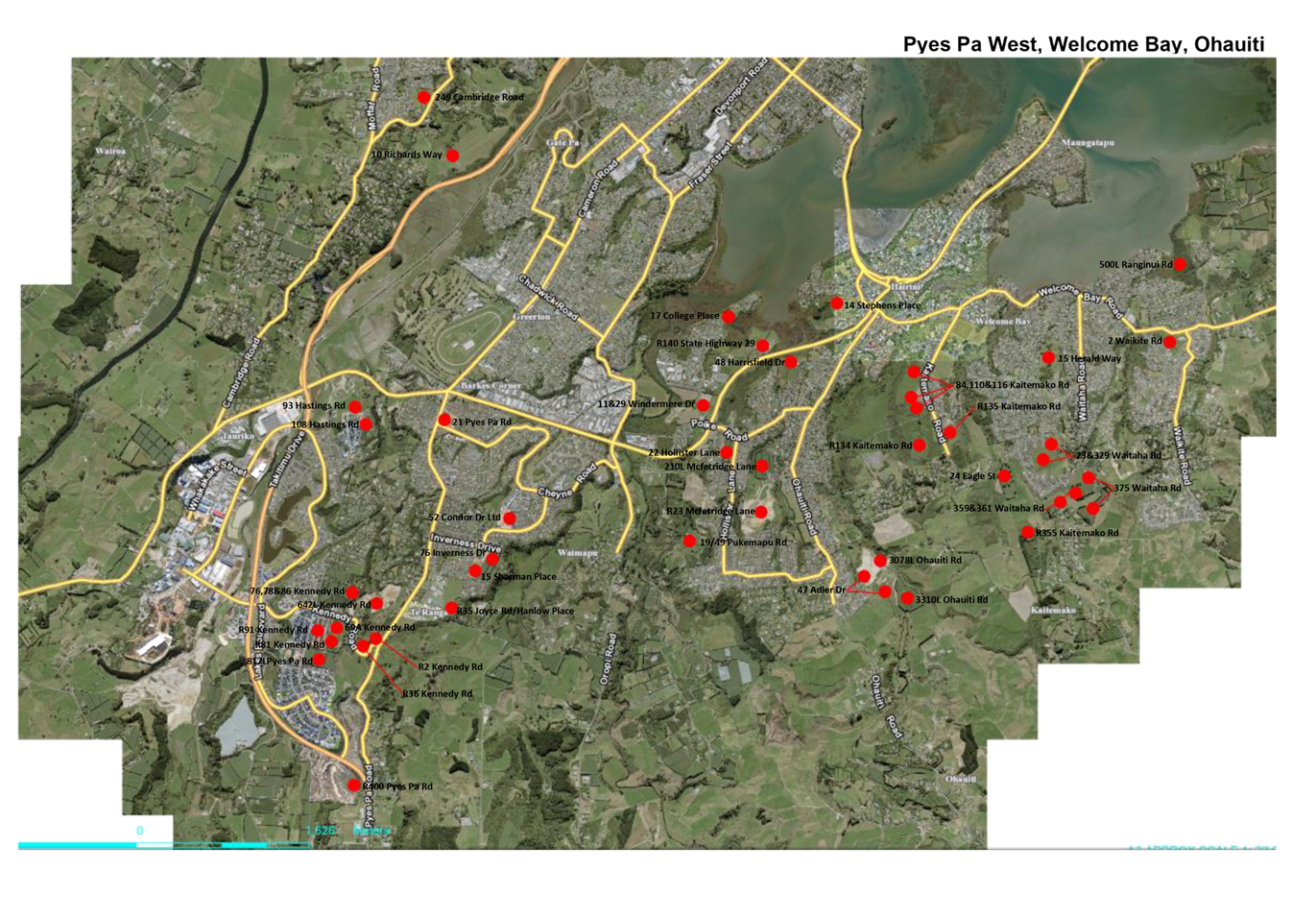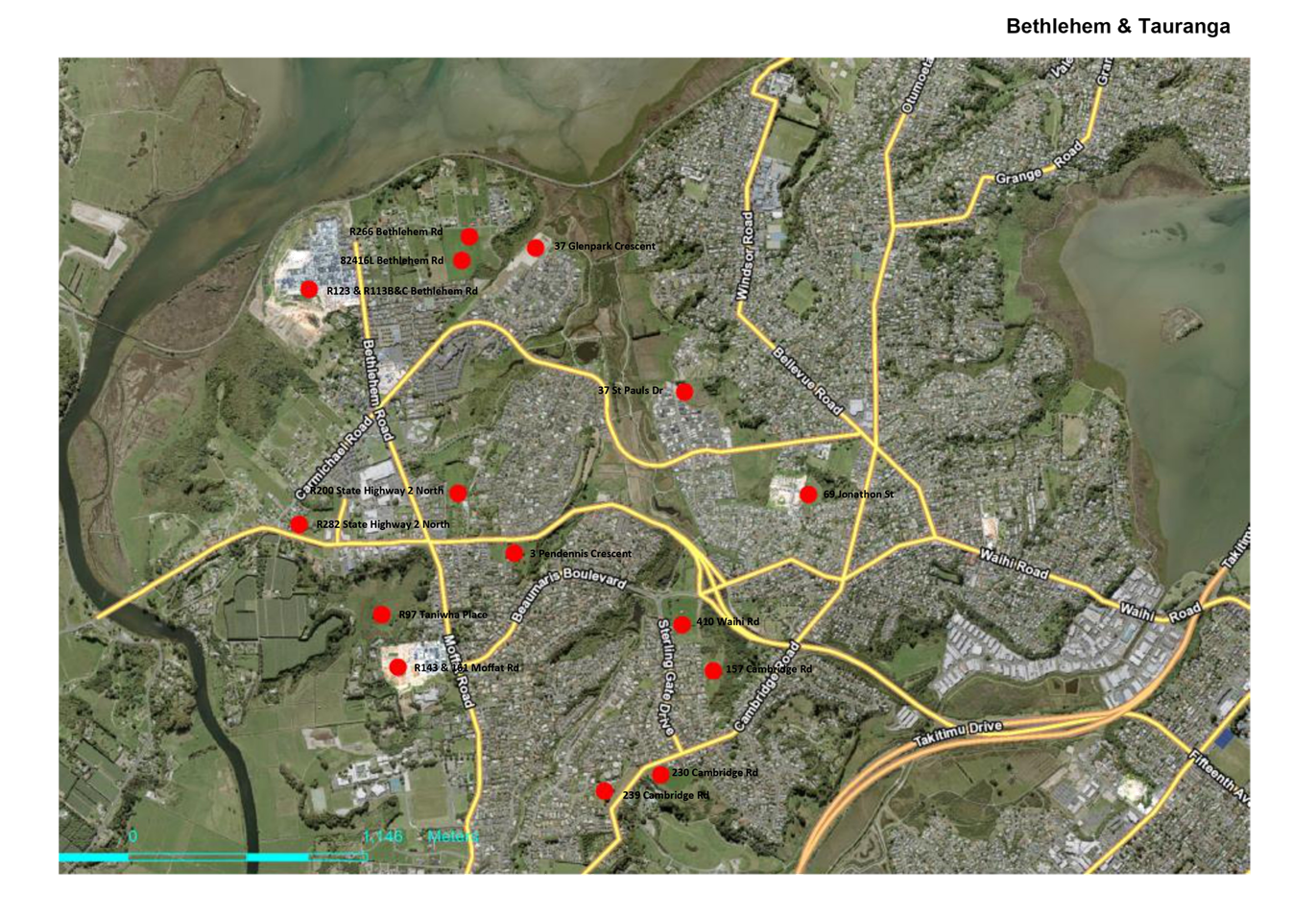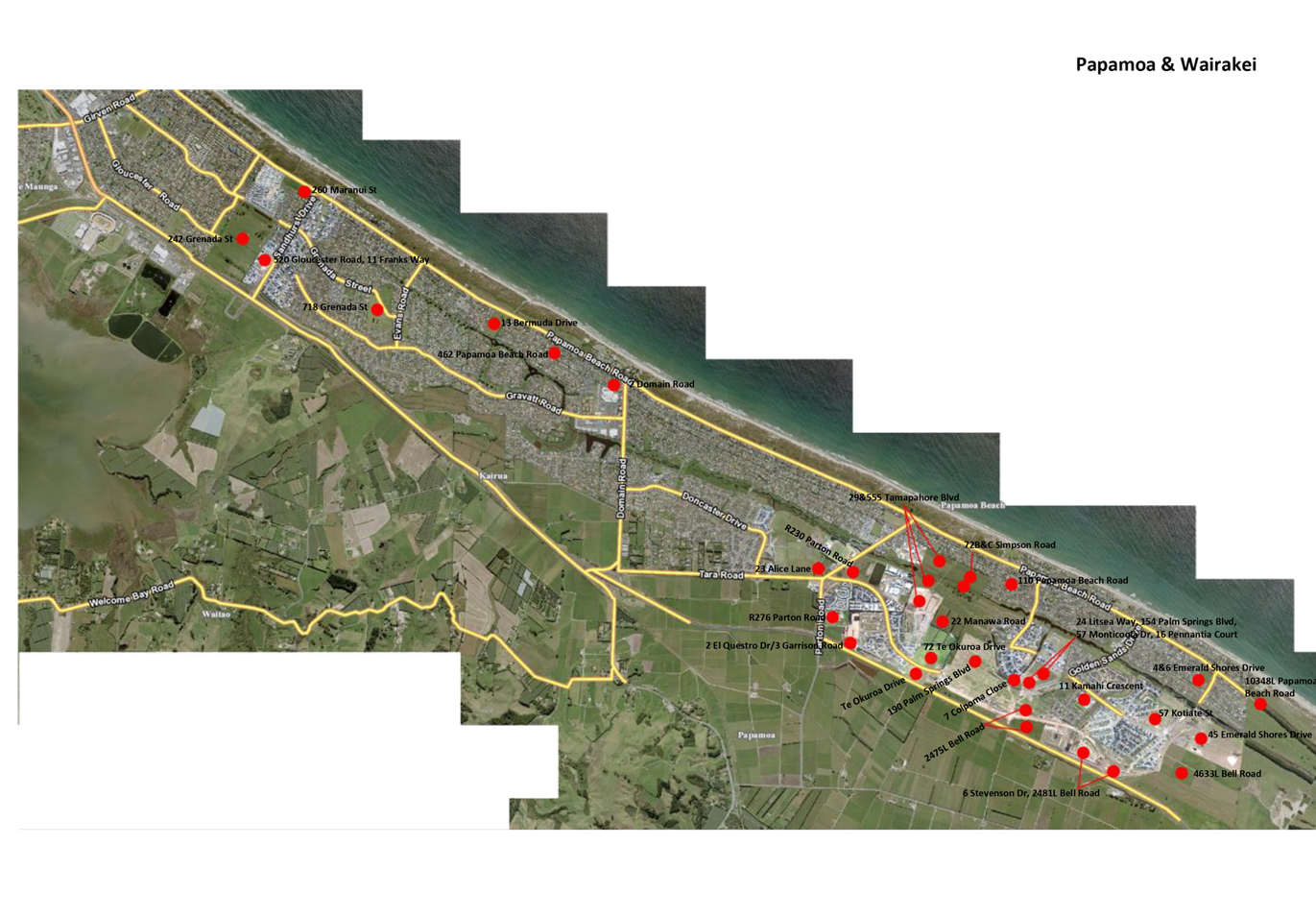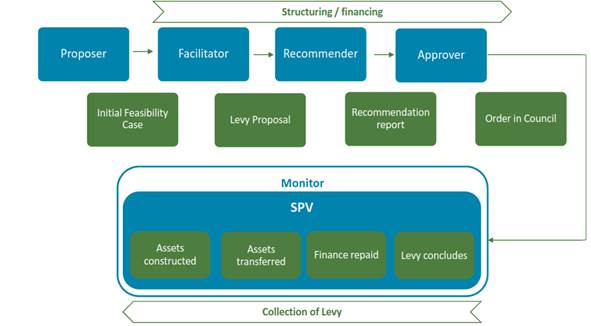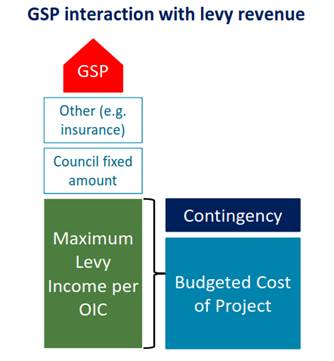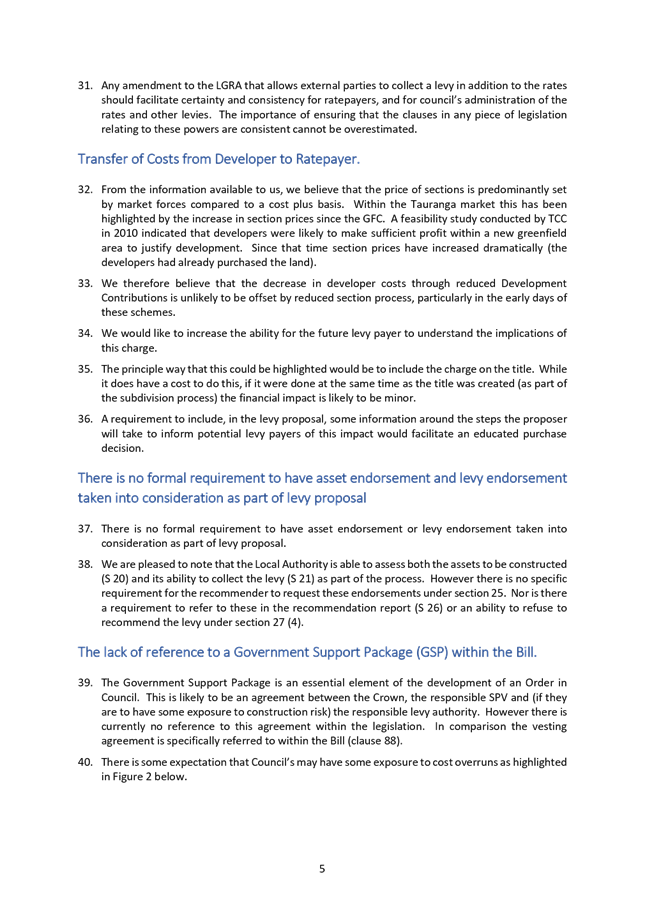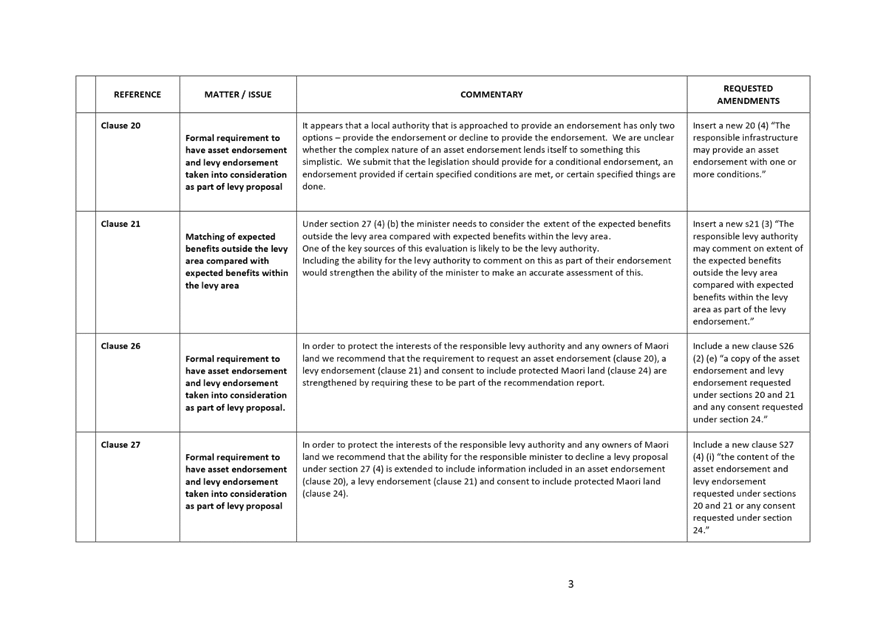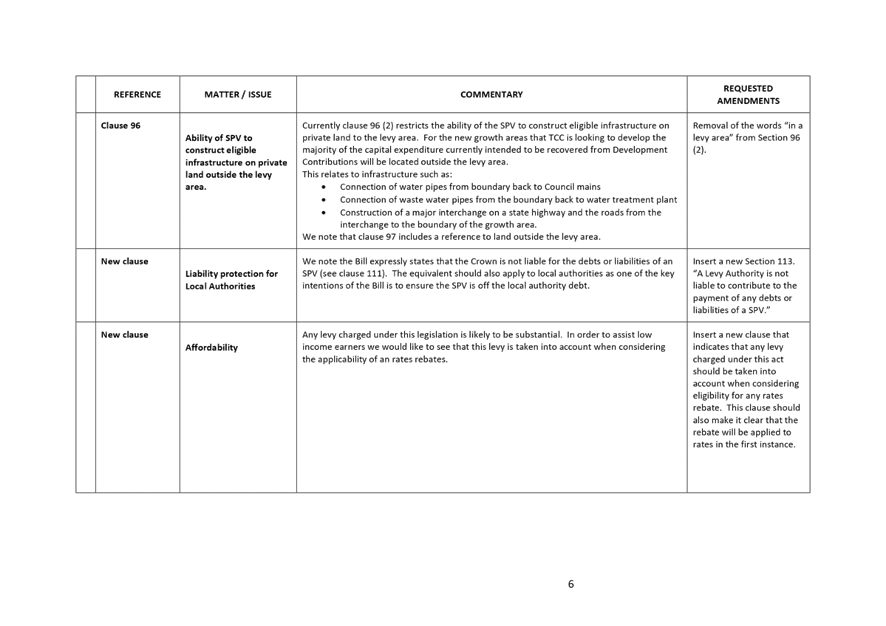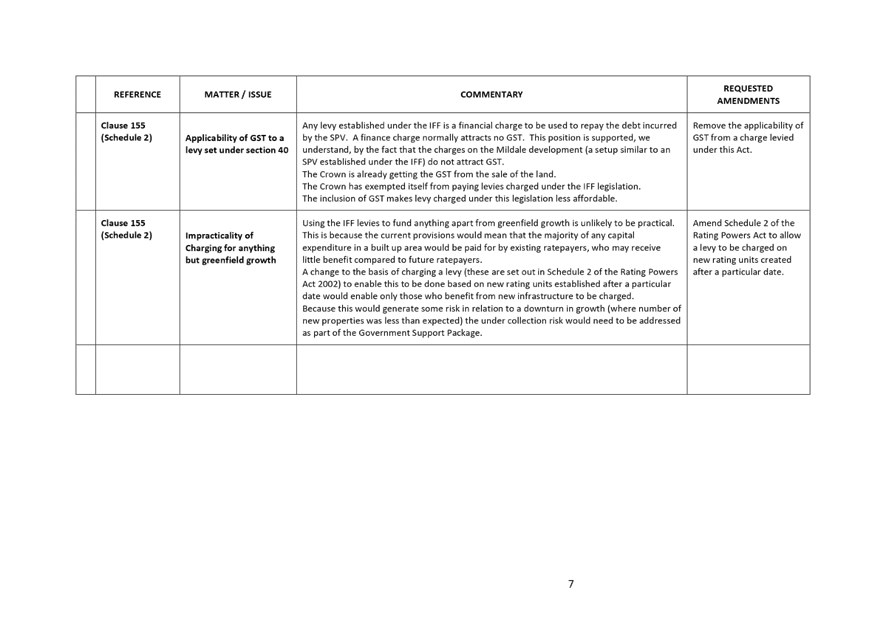7 Business
7.1 Annual
Plan 2020/21 - Draft 2020/21 Budget Options and Implications
File
Number: A11287638
Author: Jeremy
Boase, Manager: Strategy and Corporate Planning
Kathryn Sharplin, Manager:
Finance
Christine Jones, General
Manager: Strategy & Growth
Authoriser: Paul
Davidson, General Manager: Corporate Services
Purpose of the Report
1. This report seeks
the Committee’s direction on issues and options relevant to the draft
2020/21 Annual Plan budget prior to adoption of that draft document later in
March.
|
Recommendations
That the Policy Committee:
(a) Receives report ‘Annual
Plan 2020/21 - Draft 2020/21 Budget Options and Implications
(b) Notes that the Executive recommends
that the Policy Committee approves an Annual Plan budget package in the mid
to upper range of Options 3 and 4.
(c) Approves 2020/21 capital programme
of $x and associated rates revenue increase of x%.
(d) Recognises the rates
increase of x% is made up of:
(i) Business as usual
general rate x%
(ii) Waters x%
(iii) Growth & transport planning
x%
(iv) Debt management x%
(v) Other to reflect decisions
made during the meeting to add operating expenditure x%
(e) Approves a further amendment
to the rating structure by reducing the uniform annual general charge to 10%
(over and above the reduction to 15% approved by Council in December).
(f) Agrees to assess and
review further opportunities to address Council’s funding and financing
challenges with central government, regional local government partners, and
other growth councils.
|
Executive Summary
2. Since the December
2019 Council meeting when the draft 2020/21 Annual Plan was first considered,
there have been a number of matters that have affected Council’s
financial outlook. These matters include additional capital budgets,
additional provisions for weathertightness claims, and the deferral of elder
housing divestment revenues.
3. The cumulative
effect of these matters is that the parameters for the draft Annual Plan that
were adopted by Council in December are no longer financially sustainable or prudent.
This affects both the short-term outlook as covered by the Annual Plan and the
medium-term outlook that will be addressed in next year’s Long-term
Plan.
4. While the matters
listed above create the immediate need for this report, there are deeper
underlying reasons for Council’s current financial situation. These
include systemic issues in the financing and funding of major infrastructure to
support population and industrial growth. These issues are shared by a
number of growth-affected councils who are working collectively with central
government on long-term solutions. These potential solutions, though,
will not be available in time to help address the issues faced with the draft
2020/21 Annual Plan, and nor will they be a sufficient toolkit to address those
issues and therefore further solutions are required.
5. The immediate
actions required to address Council’s current financial situation are to:
· prioritise capital expenditure
· increase revenue, and
· pay down debt
while commencing engagement with
the community and regional and national partners regarding the city’s and
the Council’s ongoing fiscal challenges, and starting to develop a plan
to investigate, evaluate and decide upon options for medium-term
solutions.
6. To ensure that sufficient
capital expenditure is budgeted to deliver on the growth and community needs of
the city, and to ensure that a meaningful contribution is made to paying down
debt, a significant rates increase is recommended.
7. To recognise the
potential impacts of such a rates increase on the ratepayers of lower valued
properties, it is also recommended that a further reduction in the uniform
annual general charge (being the ‘fixed’ element of individual
rates bills) be approved.
8. The matters
addressed in this report will not be ‘solved’ through this Annual
Plan process. Further work will be required through the 2021/31 Long-term
Plan process that Council will commence once the 2020/21 Annual Plan is
adopted.
Background – PART 1 – RECENT EVENTS
December Council report
9. On 10 December,
staff presented the Annual Plan 2020/21 indicative budget for Council’s
consideration. That report recommended an after-growth rates rise of 5.7%
split across residential
and commercial
ratepayers while noting that this was ‘significantly less than the
8.2% planned in the Long-term Plan’ and that this lower-than-planned
revenue ‘does not set a strong fiscal base for the Long-term Plan
2021-31 and future years’.
10. In addition, the December
report also recommended that Council increase the contribution to the risk
reserve from the budgeted $1m to $4.4m in order to more quickly move that
reserve from its current deficit position.
11. In response to the December
report, Council resolved as follows:
(a) Agrees to continue with
year three of the rating structure changes to reduce the UAGC to 15% and
increase the commercial differential to 1.2%.
(b) Endorses in principle the
Annual Plan draft budget for capital and operations within the envelope of a
mean residential rates increase for 2020/21 of no more than forecast inflation
plus 2%
(i) Council to be
provided with options to achieve this rating level, together with the pros and
cons of these options.
(c) Notes that prior to
finalising the draft budget a further budget report will be provided to the
Policy Committee in February regarding:
(i) requests from Bay
Venues Ltd; and
(ii) any budget updates that
might arise from work currently underway.
12. The forecast inflation level
for 2021 is 1.9% meaning that resolution (b) above results in a mean
residential rate increase for 2020/21 of no more than 3.9%.
13. Council made no decision on
the recommended increase in contributions to the risk reserve, instead
resolving to leave the matter to ‘lie on the table’.
Events since December
Changes to
capital expenditure budgets
14. Since the December Council
meeting several updates have occurred which have implications for the 2020/21
budget. The most significant of these are briefly detailed below.
15. The
total budget to deliver the Waiāri water supply project
has increased impacting both the 2020/21 budget and future years’
budgets. The revised Waiāri budget was reported to the Projects,
Services & Operations Committee on 18 February. The recommended Waiāri
budget for 2020/21 is now $15.52 million more than it was in December.
|
|
20/21 budget
|
Future years’ budgets
|
Total remaining budget
|
|
Reported to
Council 10 Dec 2019
|
$53.29m
|
$23.30m
|
$76.59m
|
|
Budget as
proposed now
|
$68.81m
|
$26.23m
|
$95.04m
|
|
Difference
|
+$15.52m
|
+$2.93m
|
$18.45m
|
16. Note that when combined to
past years’ spending and the current year’s budget these figures
represent a total project budget of $177m as reported to the Projects, Services
& Operations Committee. This is the ‘P50’ budget, the
budget where modelling shows there to be a 50% likelihood of the final project
outcome being below the budget and a 50% likelihood of the final project
outcome being above it.
17. The increased budget estimate
for the Waiāri project results from market response to tenders and
physical conditions encountered during the early stages of construction.
The initial estimates were established following geotechnical testing, Monte
Carlo risk and cost forecasting, and peer reviews by both Council-appointed
external advisors and separately by Crown-appointed external advisors as part
of the Housing Infrastructure Fund process.
18. Weathertightness claims
have been reviewed and have increased potential costs to Council. The
extent of such claims was confidentially reported to the Finance, Audit and
Risk Committee on 25 February. A significant increase to Council’s
provision for future payments has been included in the revised draft
budget. This provision, while not capital expenditure, is debt funded and
therefore negatively affects debt capacity.
19. Bay Venues Limited
presented its plans for changes to its capital and operational budgets to the
Policy Committee on 19 February. The Committee resolved to include, for
the purposes of prioritisation at this meeting, an increase in new capital
budgets of $1.05m, an increase in renewal budgets of $1.31m, and an increase in
the rates-funded operating subsidy of $150,000 (together with increases in user
fees).
20. Additional work on the planning
of wastewater reticulation in the western corridor has identified an
accelerated need for additional infrastructure to service zoned and committed land,
including that on which the recently announced Winstone Wallboards factory is
proposed to be built. This programme of works has been estimated at $26m,
including $6.1 million in 2020/21 with the remaining costs spread over the
subsequent two years. This work will also provide interim solutions for
the next stages of industrial and residential land zoning in the area.
21. The 2020/21 budget for the
completion of the Harington Street carpark has been increased from $5.9m
to $10m. This reflects updated estimates for the practical cost of
remediation.
22. Other notable increases in
capital budgets since December include:
(a) Bringing forward from 2021/22
$3.7m related to the development of the Papamoa East Interchange
(b) A new project providing
additional capacity from the Oropi water treatment plant ($2.16m)
(c) Additional capital relating to
the Vessel Works wharf offloading project ($2.0m)
(d) Additional land purchase for
the western corridor ring road ($1.0m).
23. A number of other projects
have seen budgets reduced or deferred since December, though these do not
offset the increases listed above.
24. In addition to the items above
which have a direct impact on the 2020/21 budget, early planning for the
2021/31 Long-term Plan indicates significant increases to capital
expenditure budgets for growth areas, for resilience, and for social and
community infrastructure. Some of these growth-related water and
wastewater increases have already been reported to the Urban Form & Transport
Development Committee.
Potential
expenditure items not yet included in the draft budget
25. In addition to the items
above, which have all been incorporated in the revised draft budget, there are
a number of items where staff are aware of potential funding requests.
These potential funding requests have not yet been included in the revised
draft budget. For instance:
(a) The Tauranga Art Gallery
Trust has informally submitted a request for additional operating funding
of $259,000 relating to Mana Moana 2020, a significant new programme
celebrating our place in the Pacific. It will create a major city
centre/waterfront destination to stimulate business and foot traffic.
(b) Budgets are being prepared for
additional stakeholder engagement costs, subject to the outcome of an
informal briefing later in March.
(c) There is the potential for a
short-term funding request relating to the Our Place site on Willow
Street.
(d) A large group of key
stakeholders and practitioners are currently working together to develop a Sub-Regional
Homelessness Strategy. The action plan that is being developed alongside
that strategy, including prioritisation, will be delivered to all key
stakeholders, including Council by the end of March 2020. However, there is no
budget currently allocated to the delivery of any of the outcomes the strategy
is planned to address. Therefore, it is recommended that the Committee put
aside a bulk amount as part of the Annual Plan process to fund and drive key
initiatives that are prioritised through the development of the Western Bay of
Plenty Sub-Regional Homelessness Strategy.
(e) A potential street
ambassador function and resourcing for bylaw enforcement was approved in
principle by Council at its meeting of 27 February 2020 and referred to this
2020/21 Annual Plan prioritisation process.
(f) A range of upcoming land
purchases are required to facilitate the development of zoned growth areas
and to progress the readiness of future growth areas. This is
particularly so in the Pyes Pa / Tauriko area where projects such as the
western corridor ring road, southern connection to the Tauriko Business Estate
from SH29, interim access for Tauriko West from SH29, and improvements to the
Cambridge Road / SH29 intersection are being planned and progressed.
There is currently significant uncertainty around the timing and quantum
of some of these purchases. The approach that staff have taken in these
instances for the proposed annual plan capex budget is to include some
relatively small holding budgets. If additional budgets are required in
the 2020/21 financial year, they would be addressed on a case by case basis
through a report to Council.
Other budget changes that impact on Council’s
debt capacity
26. There are two other changes
that have been made since December that affect Council’s budgeted debt
levels and therefore its capacity to incur further debt.
27. The first of these is the
removal of the budgeted revenue from the divestment of Council’s elder
housing portfolio. This reflects the reasonable doubt that the divestment
(which is consistent with decisions made in the 2018/28 Long-term Plan process)
will be completed by the end of the 2020/21 financial year. The sale had
been budgeted to generate $23 million in 2020/21. The later timing of the
divestment will enable potential purchasers to utilise the provisions in the
upcoming residential intensification City Plan change to redevelop, creating
higher density on sites and therefore providing more housing stock. A
separate report on the elder housing divestment process is being prepared for
Council in April 2020.
28. The second change is the
reduction of the ‘capital adjustment’ or ‘smoothing’
project from the budget. This was a $35 million ‘negative’
project in the capital works schedule to recognise the estimated amount of work
that Council budgets for but is unable to complete in the year. This can
arise for reasons such as difficulty over land purchases or access, project
delays at planning or construction stage, or other matters beyond
Council’s control such as weather conditions or unforeseen ground
conditions. The recommended options later in this report include a
reduced $20 million capital adjustment to recognise the perceived greater
certainty over the projects retained in this year’s budget.
Impact of
events since December
29. The cumulative impact of
additional capital budgets, additional provisions for weathertightness claims,
the removal of elder housing divestment revenues, and the reduction in the
capital adjustment is an increase in projected debt of approximately $90 million.
Combined with the December resolution supporting a reduced mean residential
rate increase, this results in a draft Annual Plan budget that is not
financially sustainable or prudent.
30. The key ratio of
Council’s debt to its revenue nears its limit set both by Council and its
financiers. As is detailed later in this report, this situation is not
tenable.
31. Further, this issue is not
restricted to the draft 2020/21 Annual Plan budget. Early modelling
(using 2018/28 Long-term Plan budgets and known increases required in future
years) shows the 2021/31 Long-term Plan to be financially unsustainable across
multiple years.
32. This modelling indicates, over
the period of the next Long-Term Plan, a gap between the necessary capital
expenditure and Council’s ability to finance and fund that capital
expenditure of between $500 million and $1 billion.
background – part 2 – how we got here
Systemic issues
33. There is a broad
acknowledgement from independent analysts that the system of local government
funding, and particularly as it applies to high-growth councils such as
Tauranga, is not optimal.
34. In supporting the introduction
of the Infrastructure Funding and Financing Bill to Parliament in December
2019, Infrastructure New Zealand noted:
“The
biggest obstacle to adequate land supply, and therefore affordable housing, in New
Zealand’s cities is that our growth councils have insufficient funding
for this (roading and waters) local infrastructure.”[3]
35. Earlier, in a report titled Building
Regions, Infrastructure NZ summarised the planning and funding challenges
between central and local government as follows:
“…
an institutional system arrangement which misaligns roles, responsibilities and
resources across the public service.
“Central
government entities with national objectives are performing functions with
localised impacts. Local government entities without scale or resources are
providing services with regional and national impacts. Neither are optimised to
respond to the communities they are affecting and no one is delivering regional
outcomes.
“Two of
the most powerful governing responsibilities have been separated and isolated.
Planning is almost completely delegated to local government. Fourteen out of
every fifteen tax dollars is collected by central government. Central
organisations cannot plan and invest long term. Local organisations can plan,
but with little funding have no certainty as to whether plans can be delivered.
Neither are able to see the world through the same lens. Disagreement and
mistrust are pervasive.”[4]
36. In a series of reports
relating to housing, urban planning, and local government funding[5], the Productivity
Commission has recommended additional funding tools be made available to
help local government ensure that ‘growth pays for growth’.
37. The Commission’s 2019
report into Local government funding and financing recognises the issue
thus:
“The
failure of high-growth councils to supply enough infrastructure to meet demand
is a serious social and economic problem. Councils’ failure to adequately
accommodate growth has been a significant contributor to the undersupply of
development capacity for housing in fast-growing urban areas. This in turn has
been a major driver of rapid and harmful house price increases in New Zealand
since around 2000.
“Councils
have funding and financing tools to make growth “pay for itself”
over time by deriving revenue to fund the infrastructure for new property
developments from new residents rather than burdening existing ratepayers.
However, the long time it takes to recover costs, debt limits and the
perception that growth does not pay are significant barriers.”[6]
38. The Commission then provides
the following suggestions:
“For
funding and financing growth, the recommendations are to:
· give councils
the ability to levy some form of value capture using targeted rates on property
values associated with growth and infrastructure investment. This has the
potential to be a significant additional revenue source for high-growth urban
councils;
· enhance
councils’ ability to charge for road congestion, and wastewater (by
volume); and
· complete policy
work on and implement an enhanced version of Special Purpose Vehicles to help
high-growth councils nearing or at their debt limit to finance investment in
infrastructure to meet demand for growth.”[7]
Government response
39. The Government recognises the
existence of systemic funding and financing issues and has introduced
initiatives that attempt to address them.
40. In 2016 the Government
launched the Housing Infrastructure Fund (“HIF”), a
billion-dollar fund intended to accelerate the supply of new housing by
providing interest-free loans (for ten years) to councils in areas of high
housing need. This Council successfully sought HIF financing for the Waiāri
water supply project, the Te Tumu development, and the Te Maunga wastewater
treatment plant upgrades.
41. Note, however, that the effect
of the HIF was to lower interest rates on specific growth projects but that
there was no beneficial impact on overall debt levels or ratepayer costs.
In fact, because of changes to interest rates over time, the practical
implementation of the HIF has created a detrimental impact on
rates. This resulted in the Finance, Audit & Risk Committee
resolving in November 2019 to:
“Approve
that no further HIF drawdowns are undertaken for the remainder of the 2019/20
financial year or the 2020/21 Annual Plan unless a satisfactory conclusion is
made in relation to discussions with the Government.”
42. The draft 2020/21 Annual Plan
has consequently been prepared in accordance with the above resolution.
43. In December 2019, the
Government introduced the Infrastructure Funding and Financing Bill to
Parliament. The purpose of the Bill is:
“to
provide a funding and financial model for the provision of infrastructure for
housing and urban development, that—
(a) supports
the functioning of urban land markets; and
(b) reduces
the impact of local authority financing and funding constraints; and
(c) supports
community needs; and
(d) appropriately
allocates the costs of infrastructure.” (emphasis added)
44. Council’s proposed
submission to the Infrastructure Funding and Financing Bill is to be considered
by the Policy Committee on 4 March 2020.
Cumulative
revenue deficits
45. The 2018/28 Long-term Plan proposed
significantly higher rates increases in year 2 and 3 than were set through the
2019/20 Annual Plan and which were proposed by Council for 2020/21 at its 10
December meeting. The lower revenue achieved directly impacts Council’s
capacity to borrow to pay for new capital investment.
46. The cumulative impact of
setting rates lower than proposed in the Long-term Plan can be seen below in
two graphs, one assuming a 5.1% average rates increase (Option 1 later in this
report) and one assuming a 7.6% average rates increase (Option 2 later in this
report):

47. The cumulative impact over
just two years since the Long-term Plan was adopted (based on a 5.1% average
rates increase for 2020/21) is more than $21 million less income, while the
similar figure based on a 7.6% average rates increase is more than $17 million.
48. All
Long-term and Annual Plan processes require a trade-off between providing for
future investment, retaining debt headroom to respond to unforeseen risks, and
delivering rates increases that are affordable and acceptable to the
community. These issues have been raised by both the Executive and the
mayor and councillors through formal Council reports and through community
engagement on formally approved budgeting and planning documents. A small
sample of examples are included below.
49. The
2010/11 Annual Plan consultation document demonstrates the ongoing pressure
that this Council has faced for many years:
“Growth
demands continue to place significant pressure on the Council to find ways to
fund our city’s needs. It has created a funding problem, as affordability
restricts the Council from increasing rates sufficient to meet the full costs
of providing the infrastructure required. Long-term debt, used to help minimise
the impact on today’s ratepayers, will soon reach its prudent maximum
level.”
50. In
preparing for the 2011/12 Annual Plan, a report to Council[8] addressed the debt and
debt-to-revenue ratio issues thus:
“While
an expected net debt to operating revenue ratio of less than 260% is now
projected for the end of the 2011/12 financial year staff recommend that
Council take decisive action to meet the financial ratios within existing
Treasury Policy limits. The key reasons for doing this are:
· Ensure the fiscal position of Council is not weakened
further; and
· Provide some flexibility to respond to the medium to
long term fiscal issues which Council will face through the development of the
2012 – 2022 Ten Year Plan.”
51. More
recently, in preparing for the 2017/18 Annual Plan, a report to Council[9] includes the
following, which is very similar to the situation this year:
“Since
the development of the 2015-2025 Long Term Plan, levels of growth have occurred
that are significantly higher than were assumed in the LTP.
Infrastructure pressures from continued high levels of growth will put
significant pressure on Council’s balance sheet capacity in the 2017/18
and future years.
“In
addition, a number of external factors have resulted in a greater level of risk
for Council in managing its financial position going forward. Examples
include the greater risk around exposure for leaky home claims. Council needs
flexibility in its balance sheet. This can be attained through maintaining a
risk reserve together with debt headroom. Funding a risk reserve also
ensures that some risk is funded by existing ratepayers rather than transferring
significant risk to future ratepayers.
“TCC
is currently within its financial strategy limits for debt and the debt to
revenue ratio. However, the increase in debt to fund infrastructure earlier
than in the LTP means the 2017/18 debt level and debt to revenue ratio are
higher than they were in the LTP. On current assumptions, without intervention,
it would exceed some of its limits in the early years of the next LTP.”
52. Similar
statements to the above can be identified in most Annual Plan and Long-term
Plan processes over the past decade.
Debt funding operating expenditure
53. In general, operating
expenditure is funded from operating revenue. This is consistent with the
Local Government Act requirement that “a local authority must ensure
that each year’s projected operating revenues are set at a level
sufficient to meet that year’s projected operating expenses”
(section 100(1)).
54. Section 100(2) provides for
some exceptions to this rule, but the principle is clear.
55. Council’s Revenue &
Financing Policy mirrors the general principle of section 100(1) and states
that:
“Loans
will not be used to fund operating expenditure, unless it is otherwise resolved
by Council. Council may resolve to use loans to fund operating
expenditure where the expenditure provides benefits outside the year of
operation, such as community grants for assets.”
56. In recent years, Council has
resolved to finance a number of significant operating projects through
rate-funded loans. This has the effect of spreading the rating
burden of these projects across a number of years. In terms of
Council’s debt-to-revenue ratio, compared to rate-funding in the year
costs are incurred, it has the effect of increasing debt and reducing
revenue. Both of these implications have a negative effect on the ratio
and consequently Council’s ability to debt-fund other projects in the
future.
57. The recommended options
detailed later in this report seek to reverse these earlier decisions to
debt-fund operating expenses. If supported, this will increase revenue
and reduce debt.
Tauranga is not unique
58. While the specific
circumstances covered in this report relate to this Council, we are aware that
other councils are facing similar pressures.
59. For instance,
Thames-Coromandel District Council (“TCDC”) are proposing a 9.98%
average rate increase this year, which it attributes to “higher than
anticipated costs”. TCDC also note that “This proposed
rating increase is not enough to cover the total increase in operating costs,
so will require additional funding by borrowing which is achievable with a
short-term loan to reduce the rates increase and spread it out over subsequent
years, to lessen the burden on ratepayers.”[10]
60. The following table compares
the overall average rates cost (commercial and residential combined) of the
major metro councils.
|
Council
|
Total rates
2019/2020 (Incl. GST)
|
Average rates
per rating unit
|
|
Dunedin
|
$
180,194,300
|
$ 3,186
|
|
Christchurch
|
$
598,990,150
|
$ 3,449
|
|
Tauranga
|
$
205,471,650
|
$ 3,521
|
|
Hamilton
|
$
229,812,344
|
$ 3,871
|
|
Auckland
|
$
2,188,954,942
|
$ 3,889
|
|
Wellington
|
$
373,296,251
|
$ 4,717
|
61. These figures include water
rates (including water-by-meter where applicable) with the exception of
Auckland where both water and wastewater are charged through Watercare.
Also note that Auckland is a unitary authority with a consequently different
cost base to the other metros. Tauranga is the only metro shown here
without a kerbside waste collection in its cost structure. Adding
approximately $300 per rating unit would create a reasonable comparator.
62. For several years, Council has
been working with the other high-growth councils of Auckland, Hamilton and
Queenstown-Lakes regarding funding and financing challenges.
63. The growth councils have
sought to identify commonalities in growth challenges and potential
solutions. Through this forum the growth councils have engaged directly
with senior staff of the Ministry of Housing and Urban Development, the Ministry
of Transport, the New Zealand Transport Agency and the Department of Internal
Affairs. These discussions have been constructive, resulting in a common
understanding of the challenges and practical realities of managing growth and leading
to early conversations on potential solutions.
64. The engagement and commitment
of central government in the “Growth Councils’ Initiative” is
acknowledged and valued. There is a need to build on this goodwill and
move this work forward with a sense of pace and urgency.
65. In response to their own
funding challenges in the transport area, Auckland Council has successfully
lobbied the government for an additional fuel tax of 10 cents per litre of
petrol and diesel sold in the region. This raised $156 million in the
year to 30 June 2019.
66. Meanwhile, Queenstown-Lakes
District Council has been working closely with central government on a proposed
visitor levy (or ‘bed tax’) set at 5% of overnight accommodation
costs. This is projected to raise $22.5 million per annum to invest in
the infrastructure needed to support the tourism industry in the
district. A non-binding referendum in mid-2019 saw 80% of local
voters supporting the proposal. Enabling legislation has yet to be
introduced to Parliament.
background – part 3 – Prudent financial
management
Council’s debt thresholds
67. As part of each Long-Term
Plan, Council adopts its financial strategy. Within the financial
strategy are a number of quantified limits and targets for rates and borrowing.
68. One of these limits relates to
the level of external debt to annual operating revenue. Council has
established a maximum limit of 250% for this ratio. This is the same
level that is set as a maximum by the body from which Council secures the majority
of its debt finance, the Local Government Funding Agency (“LGFA”).
69. Because there are serious
implications should Council breach the 250% limit, in previous Long-term Plans
Council has set itself a lower limit of 225%. The reasons why this
approach was not taken in the 2018 Long-term Plan are set out in the financial
strategy thus:
“Maintain
debt headroom. In the previous LTP, the maximum debt to revenue ratio was
set below the Treasury policy maximum at 225% to allow some debt headroom in
the event of unforeseen events and to provide capacity for expected high levels
of capital expenditure outside the ten years. For this LTP the lower
limit is not maintained because it is not possible to achieve the
infrastructure requirements in the middle and later years of the LTP within
this limit. However, the Treasury limit of 250% is maintained as an upper
limit. The debt to revenue ratio throughout the LTP remains below the
maximum providing a level of debt headroom should unforeseen events occur.
Over time, it is prudent to aim for further reduction to ensure debt capacity
for renewals of existing assets and to provide capacity for unforeseen
events.”
70. It is the opinion of staff
that a return to a self-imposed upper limit of 225% demonstrates prudent financial
management. As such, the options outlined later in this report assume a
maximum budgeted debt to revenue ratio of 225%.
Consequences of breaching the LGFA threshold
71. In the event that Council
breaches the LGFA limit of 250% the consequences are significant.
72. In short, Council would be in
breach of its borrowing covenants. Those covenants provide a brief period
to allow Council to rectify the breach, but if Council were unable to so
rectify then the LGFA would require repayment of all of its debt issued to
Council. This would require Council to refinance over $500 million of
debt almost instantly.
73. The direct costs of
refinancing Council’s debt would be reflected in the interest rates
charged and the available terms of debt from other lenders.
Council’s treasury staff advise that the interest rates and, in
particular, the terms of loans would be significantly disadvantageous to
Council if refinancing was required. The additional cost of financing if
the limits were breached is estimated at a more than 1% increase of rates
initially, increasing as debt increases.
74. The indirect costs of
refinancing Council’s debt portfolio reflect the reputational and
governance risks associated with expulsion from the Crown-supported LGFA model.
These costs are difficult to measure but would also be significant for the
organisation and thus the city.
Risk reserve
75. As
noted above, at its 10 December meeting Council considered and then resolved to
leave ‘lie on the table’ the matter of its risk reserve.
76. The
key points made in the December report relating to the risk reserve were:
· Council maintains
a risk management fund (risk reserve) to fund unforeseen events that occur in
the city that are not covered by insurance. The risk reserve also helps
council manage financial risk.
· As of 30 June
2019, the fund was $15.5m in deficit. This is largely a result of Bella Vista
recovery costs and provisions relating to weathertight homes claims.
· The deficit is not
a cash deficit but reflects Council’s expected exposure in the medium
term.
· To build the
reserve (or rebuild it given it is currently in deficit), Council currently
adds around $1 million per year to the reserve.
· If no further
events occur that need to be funded from the risk reserve, this means that the
‘reserve’ will be returned to a zero balance in 15 years.
· The level of
funding in the reserve has been identified as a critical risk on the corporate
risk register.
77. The
December report recommended that the contribution to rebuilding the risk
reserve should be increased from the budgeted $1 million in 2020/21 to $4.4
million. This increase equated to a 2% increase in rates.
78. Since
December, and as noted earlier in this report, Council’s exposure to
weathertightness claims has increased. Consequently, the revised draft
budget for 2020/21 assumes borrowing will be higher to fund weathertightness
liabilities next year.
79. The
issue of the risk reserve has been raised by staff over a number of
years. On occasions Council has decided, against staff advice, to
decrease contributions into the reserve. For example, the 2018/28
Long-Term Plan saw zero contribution to the risk reserve, with the following
explanation in the document (page 23):
“Maintain a risk reserve.
A risk reserve is maintained to provide annual revenue to manage potential
risks and response to unforeseen events. In year 1 there is no
contribution to risk reserve but a contribution has been included from year 2 onwards.
The contribution to this risk reserve has been reduced from current levels,
recognising that other risk tools are being utilised. In particular, ratepayers
are being required to fund unusually high investment in new assets and services
and placeholder budgets for resilience have been included. Further
investigations of resilience will allow for a more targeted approach in
managing the risks.”
80. The
recommended options detailed later in this report address the challenges of the
risk reserve and the need to obtain debt headroom to address unforeseen costs
in the future such as those that arise from extreme weather events. We
recommend a significant increase in the contribution to the risk reserve.
This approach has the impact of both increasing Council’s revenue and
decreasing its debt.
Council’s operational cost structure
81. Council’s operating
expenditure in the draft 2020/21 Annual Plan budget is $284 million.
Within this, a large proportion of costs are the direct result of past
decisions (for example, debt servicing and depreciation costs) or are
‘locked in’ via long-term contracts (such as for repairs and
maintenance on roads or water networks) or are directly related to the delivery
of agreed service levels to the community.
82. Note that some of these costs
have had significant year-on-year increases reflected in the draft
budget. For example, the electricity budget has increased 12.7% from
$5.95 million in 2019/20 to $6.71 million, while the insurance budget has
increased 43.2% from $1.96 million to $2.81 million.
83. As such, the level of
operating costs that is influenceable on a year-by-year basis is considerably
less than the $284 million. The following table illustrates this point:
|
|
2020/21 draft budget
|
|
Personnel expenses
|
$69.6m
|
|
Depreciation & amortisation expenses
|
$63.5m
|
|
Finance expenses (interest)
|
$25.6m
|
|
Contracts (e.g. repairs & maint.)
|
$32.7m
|
|
Electricity
|
$6.7m
|
|
Insurance
|
$2.8m
|
|
|
$200.9m
|
84. The remaining costs in the
draft budget are under regular review by the Executive. While potential
reductions in some operating budgets have been identified for consideration
later in this report, in totality the operating budgets are considered to be
prudent and necessary for the delivery of services to the community.
Changing operational budgets is therefore not considered to be a significant
lever in attempting to address Council’s financial position.
background – part 4 – The city’s future
85. While
much of this report understandably deals with budgeted costs, revenues, and
debt (the Annual Plan process is, after all, a resource allocation and
cost-recovery process), the key question that underlines the discussion has to
be What do we want our city to be?
86. Engagement
processes, including the recently-completed Vital Update survey, consistently
tell us that the city’s communities share aspirations for a
‘better’ city. Whether this involves improved transport
solutions, increased social amenity, enhanced protection and development of
natural features, or a range of other interventions by Council or other
agencies, there is invariably a cost attached.
87. To
prosper as a city we need financial support, both from our current residents
and, in the medium-term, from other partners.
88. This
financial support, particularly from our current residents, highlights another
underlying question, being What level of contribution is affordable for our
communities?
89. As
previously advised a programme is underway to create a city-wide vision and
supporting actions plan in collaboration with key partners and
communities. A first step in the programme has been to complete a
Vital Update survey in partnership with Acorn Foundation, TECT and BayTrust.
This survey was conducted from mid-November 2019 to mid-February 2020 and
resulted in over 5,000 respondents.
90. The
draft and interim results may assist the Mayor and Councillors in prioritising
Council investment through the Annual Plan. It is intended that further
work will be undertaken to more meaningfully inform the Long-term Plan decision
making process.
91. Key
interim results from the survey include:
· ‘Main
reason you love living in Tauranga”; 42% love nature and being close
to the beach and consider Tauranga a beautiful place to live
· “If you
could change on thing about Tauranga what would it be?”; 42% noted
less congestion, better roading infrastructure and better parking in the CBD
and the Mount
· “Is there
anything in Tauranga that needs to be preserved/protected for the city to
continue to thrive in the next 10 years?”; 42% say protecting
and providing more green spaces, natural environment, reserves and having more
trees
· “Do you
have any other comments about the future of Tauranga?”; Better roading
infrastructure (27%), public transport (13%), and stronger leadership (14%) are
the most important topics identified.
92. There is strong alignment between
the survey findings and Council’s 2018/28 Long-term Plan. The
Long-term Plan identified moving around the city (transportation) and increased
environmental standards (protecting and caring for our natural environment) as
two of the city’s biggest challenges. The other two key challenges
addressed through the Long-term Plan are resilience and land supply /
urban form.
proposed approach
93. In
considering the issues raised in the sections above, this report recognises
that the 2020/21 Annual Plan, in whatever final form, will not provide all of
the solutions. Instead, this report recognises that there are short-term
responses that need to be taken through the Annual Plan and then further
consideration of the same issues through a medium-term lens via next
year’s Long-Term Plan.
94. Critical
to this two-step process is that short-term actions through the Annual Plan
should support the necessary ‘direction of travel’ for the
medium-term responses through the Long-Term Plan.
Short-term – 2020/21 Annual Plan
95. For the Annual Plan, the
immediate actions to consider include:
(a) Prioritising capital
expenditure by deciding what it is that needs to be delivered in the coming
year, conscious of the impacts of not delivering other projects that are
deferred or otherwise prioritised out
(b) Increasing revenue
whilst being conscious of the impact on those providing the revenue
(c) Committing to pay down debt
(d) Commencing engagement
with the community and with regional and national partners regarding the city’s
and Council’s ongoing fiscal challenges, noting that Council’s
credibility in such engagements will at least in part be dependent on the
choices it makes on items (a) to (c) above
(e) Commencing development of a
plan to investigate, evaluate and decide upon options for medium-term
solutions.
Medium-term – 2021/31 Long-Term Plan
96. For the Long-Term Plan, the
likely actions include:
(a) A continuation of the
budgeting actions initiated through the Annual Plan
(b) Further development of
engagement with regional and national partners on alternative funding and
financing approaches that help enable the city to prosper
(c) Consideration of funding and
service delivery options such as asset sales or amending service levels
(d) Continuing engagement with the
community on the future of the city and the financial and delivery tools needed
to realise that future.
97. The options presented in this
report relate to the 2020/21 Annual Plan only. However, as noted above,
it is recommended that these options are considered in light of the wider
discussion around the city’s form, funding and relationships that will
occur through the Long-Term Plan process. The impact of short-term
decisions on potential long-term partnership opportunities should be a consideration
in decision-making.
Options Analysis - framing
98. The
following section provides four core options or scenarios for
consideration. The nature of decision-making regarding budgets means that
there are countless other scenarios that may be considered and as such the four
options are presented as examples for the purpose of a simpler decision-making
process.
99. In
creating these options a four-step process was identified. The Committee
may find it useful to follow the same four-step process, being:
(a) First
determine what needs to be delivered (predominantly in the capital expenditure
sphere given the importance of the debt-to-revenue ratio)
(b) Then
determine the appropriate debt-to-revenue ratio (to both demonstrate prudent
financial management and to ensure that Council’s financial positioning
entering the Long-Term Plan process is acceptable)
(c) Then
determine operational areas of priority and assess potential increases and
potential decreases to operating expenditure in light of those priorities (this
may include some of the items noted in the ‘Potential expenditure
items not yet included in the draft budget’ section earlier in this
report)
(d) Then
identify the revenue and the split of revenue sources to deliver on (a) to (c)
above. If Council considers the resultant revenue level is not
appropriate, it will need to identify the change required and review the
capital and operational areas of priority.
100. In
regard to the split of revenue sources, a separate set of options regarding the
rating model is presented for consideration.
Capital
expenditure prioritisation
101. In
preparing the options, staff and the Executive have prioritised capital
expenditure in three categories of expenditure (being renewals, growth, and
level of service investment) and into three categories for decision-making
purposes, being:
(a) Projects
and initiatives included in the draft 2020/21 capital budget
(b) Projects
and initiatives recommended for political consideration before inclusion in the
draft 2020/21 capital budget
(c) Projects
and initiatives deferred and not included in the draft 2020/21 capital budget.
102. The
criteria for making these assessments is outlined graphically in Attachment
1 to this report.
103. The
total value of the current draft 2020/21 capital expenditure budget is $207
million. The summarised list of capital projects and programmes is
included as Attachment 2 to this report.
104. The
projects recommended for political consideration before inclusion in the draft
2020/21 capital expenditure budget total $5 million and are listed in Attachment
3 to this report.
105. The
projects originally intended for the 2020/21 budget but subsequently recommended
to be deferred total $36 million and are listed in Attachment 4 to this
report.
106. It
is recognised that there are many projects on both the ‘for
consideration’ and ‘deferred’ lists for which there are valid
and arguably compelling reasons for inclusion in the draft 2020/21 Annual
Plan. This is the crux of the issue. Even with significant revenue
increases Council does not have the financial capacity to do all that it would
like to do.
107. Each
of the four options assumes a ‘capital adjustment’ or
‘smoothing’ project of $20 million to recognise the likelihood
of not all budgeted projects being delivered in the year planned. This is
a reduced level from prior years in recognition of the fact that the capital
budgets have been closely reviewed to ensure that only deliverable projects are
included.
Preferred
debt-to-revenue ratio
108. In
considering Council’s current and expected financial state, the Executive
recommends reverting to a target for the debt-to-revenue ratio of 225%.
This:
(a) Will
ensure financial ‘headroom’ to allow Council to borrow for
unforeseen circumstances without risking breaching LGFA covenants; and
(b) Is
consistent with a ‘direction of travel’ that is likely to be
recommended as Council commences the Long-Term Plan process.
109. As
such, each of the options presented below includes a presumption of a 225%
limit for the debt-to-revenue ratio.
Operating
expenditure levels
110. As
noted earlier in this report, the operating expenditure budget has been the
focus of considerable attention by staff and the Executive. The current
budget is considered by the Executive to be
‘fit-for-purpose’.
111. If
the Committee wishes to pursue an approach of reducing operating expenditure,
the Executive has prepared some options to achieve this. However, none of
these options for reductions have yet been incorporated into the draft budget.
112. Likewise,
there are several potential increases to operating budgets that have been
identified elsewhere in this report for consideration. These have yet to
be included in the budget. Should the Committee decide to include some or
all of these items then that will naturally have an impact on the financials
under each option.
Revenue
levels
113. With
the operating and capital expenditure (and therefore debt) figures established,
and with a preferred debt-to-revenue maximum set, the required revenue figure
(and therefore the rates requirement) is calculated as a consequence for each
option.
114. The
exception to this approach is Option 1 whereby the limiting factor is the
permissible revenue levels which then consequently restricts the level of
capital expenditure and debt.
Structural
Options to address Funding & Financing Challenges
115. There
are a number of challenges facing growth councils given the need to invest in
significant infrastructure to support the supply of serviced residential and
employment land, to provide an effective functioning transport network, and to build
strong communities. The key issues include:
· The current
funding and financing model does not align incentives i.e. capital
infrastructure costs sit with local government while the bulk of the tax
revenue generated by the growth in economic activity goes to central
government.
· Recent initiatives
have been taken to boost the toolkit (including Housing Infrastructure Fund,
Infrastructure Funding & Financing legislation), however multiple solutions
are needed as these do not provide sufficient financial capacity on their own.
· Sub-regional and
regional outcomes will be impacted if this investment is curtailed and
therefore we need to work sub-regionally and regionally as part of the
solution.
· Housing
affordability, economic activity and employment will be detrimentally affected
through the inability of Council to deliver growth infrastructure in a fiscally
sustainable manner. This is occurring. The pace and scale at which the
issue can be responded to will determine the size and timeframe of impact.
116. It is proposed that a comprehensive
package of solutions be explored with our key regional and national partners,
with viable options progressing into the 2021/31 Long-term Plan process.
This will include an assessment of opportunities to leverage TCC’s
existing assets and funding sources.
options analysis – capex, debt and revenue models
117. The following section sets out the four
options that have been developed. Following the narrative section, a
table is included that summarises the key financial characteristics of the
options.
Option 1 – Consistent with December resolution
118. This option responds to Council’s
decision in December to provide for a mean residential rate increase of no more
than inflation (projected to be 1.9%) plus 2%.
119. By maintaining an overall rates increase
of 5.1% (which is consistent with a mean residential rates increase of 3.9% and
a larger mean commercial rates increase), this option requires removal of
approximately $33 million of capital expenditure from the current recommended
budget (and naturally no inclusion of additional projects from the ‘for
consideration’ list).
120. Under this Option the Committee would
need to identify the projects it wishes to be removed from the draft Annual
Plan.
121. This reduction of the capital expenditure
budget (depending somewhat on the specific projects that the Committee
determine should be removed) is likely to negatively impact on:
(a) The delivery of infrastructure
to currently zoned development areas
(b) Consequently, the availability
of new housing
(c) The delivery of traffic and
transport solutions across the city
(d) Other amenity projects.
122. In addition, in order to prepare a
balanced budget this option requires a reduction in operating expenditure of
approximately $4.3 million.
123. The Executive commenced a project in late
2019 seeking realistic budget savings across the organisation that did not
result in significant impacts on service delivery. That list totals
approximately $950,000 and is included as Attachment 5 to this report.
124. If all of these opportunities are
accepted, the Committee would need to work with staff and the Executive to
agree a further $3.3 million of operational expenditure reductions. This
will undoubtedly have a direct negative effect on services to the community
either in the short-term or the long-term.
125. This option is not recommended.
Option 2 – Constrained capital expenditure
126. This option also reduces the capital
expenditure budget but by a lesser amount than Option 1 ($24 million rather
than $33 million). This option is still of a scale likely (depending on
the projects that the Committee choose to remove) to negatively impact on:
(a) The delivery of infrastructure
to currently zoned development areas
(b) Consequently, the availability
of new housing
(c) The delivery of traffic and
transport solutions across the city
(d) Other amenity projects.
127. This option allows for the operating
expenditure budget to remain as is, but doesn’t currently provide for any
of the ‘not yet budgeted’ items listed earlier in this
report. The Committee would need to specifically resolve to include any
such items as it sees fit.
128. With regards to the rating impact, this
option keeps the ‘business as usual’ average rates increase at 3.9%
but separately recognises the distinct cost pressures in two key areas of
Council’s operations. These are:
(a) Transport and urban planning
and delivery, and
(b) Water and wastewater planning
and delivery.
129. The beyond-business-as-usual impact of
these two workstreams contribute to general rate rises of approximately 1.5%
and 2.2% respectively. As such, the total rates increase under this
option equates to 7.6%.
130. This option contributes nothing directly
to debt retirement.
131. This option is not
recommended.
Option 3 – Prioritised capital expenditure plus
limited debt management
132. This option allows for full delivery of
the proposed capital expenditure programme and the ‘for
consideration’ list, but only provides minimal scope ($6 million) for the
inclusion of projects currently included on the ‘deferred’
list.
133. While this is preferable to the
constrained delivery under Options 1 and 2, it is still a level of capital
expenditure delivery that is considered to be the ‘bare minimum’ to
provide for growth and for community needs. There will remain projects on
the ‘deferred’ list that will not be able to be delivered next year
when in other circumstances delivery would be expected. Note that
for this and for Options 1 and 2, the deferral of necessary projects in one
year invariably makes for more difficult budgeting and prioritisation decisions
in future years.
134. As with Option 2 above, this option
recognises the business-as-usual average rates increase at 3.9% and separately
recognises the beyond-business-as-usual impact of transport and urban planning
and delivery (1.5%) and water and wastewater planning and delivery (2.2%).
135. In addition, this option contributes a
combined 5% rate increase to debt retirement. This takes two forms.
Firstly, an additional direct contribution to the risk reserve of 2.5% as was
recommended in the December report. This starts to rebuild that
‘reserve’ which is currently showing a significant deficit.
136. Secondly a
contribution to the retirement of debt incurred where specific operating
expenditure has been funded (via Council resolution) by debt rather than
operating revenue in the year incurred. Examples of projects where
debt-funding could be replaced by rates funding (thereby repaying the debt
incurred) include:
(a) the Urban Form and Transport
Initiative and SmartGrowth costs
(b) the Tauranga System Plan for
transport
(c) the Te Papa intensification
project
(d) City Plan plan change projects
(e) Operational costs related to
transport network and asset management projects.
137. A 2.5% rates increase would remove the
debt associated with these projects.
138. As with Option 2, as currently proposed
this option provides for the existing operating budget but does not incorporate
additional operating expenditure relating to any of the ‘not yet
funded’ items listed earlier in this report. The inclusion of such
items would require separate resolution.
139. Overall, this option results in a total
rates increase of 12.6%.
140. This option, which enables capital
delivery (albeit at a minimum level needed to provide for growth and community
needs), maintains a 225% debt-to-revenue ratio, and provides a stepped increase
in revenue, is considered to be a minimally prudent
approach.
Option 4 – Prioritised capital expenditure plus debt
management
141. This option provides for full delivery of
the proposed and ‘for consideration’ capital programme and allows
for approximately $32 million of the $36 million of deferred projects to be
added back into the final budget. As such it is the option which does the
most in terms of providing a capital expenditure budget for 2020/21 to deliver
on the growth and community needs of the city.
142. This option creates a strong financial
base by paying down debt and markedly increasing revenue sources. This
sends a strong message to central government and regional and city partners that
the city, through the Council and its rating base, is prepared to contribute
significantly to addressing the fiscal situation.
143. This option builds on Option 3 with the
same 2.5% rates increase to accommodate the retirement of debt on the listed
operating projects which have been funded by debt. It also increases the
contribution to other debt retirement (be it into the risk reserve specifically
or into general debt retirement) by a further 5%.
144. Overall, this option provides for a 17.6%
rates increase.
145. As with Option 3, this option recognises
the need to deliver necessary capital projects while maintaining a prudent
debt-to-revenue ratio and providing a stepped increase in revenue. Option
4 is considered to be financially prudent and a strong position from which to
commence the Long-Term Plan planning and discussions with national and regional
partners.
Summary of options and recommendation
146. The table below identifies key financial
aspects of the four options provided.
|
Option
|
1
|
2
|
3
|
4
|
|
Basis
|
December resolution
|
Constrained capital investment
|
Prioritised capital investment plus limited debt
management
|
Prioritised capital investment plus debt management
|
|
Sustainable capex assuming $30m carryforward (at 225% D:R)
|
$149m
|
$158m
|
$188m
|
$214m
|
|
Capex projects capacity with a $20m
capital adjustment and accruals
|
$179m
|
$188m
|
$218m
|
$244m
|
|
Prioritised capex (included plus ‘for consideration)
|
$212m
|
$212m
|
$212m
|
$212m
|
|
Capex required to be removed from the
‘included’ and ‘for consideration’ lists
|
$33m
|
$24m
|
-
|
-
|
|
Capex that can be added back from the ‘deferred’ list
|
-
|
-
|
$6m
|
$32m
|
|
Impact on Operating Expenditure Budget
|
$4.3m of reductions to be agreed
|
Nil
|
Nil
|
Nil
|
|
Debt at year end
|
$661m
|
$671m
|
$691m
|
$709m
|
|
Debt-to-revenue ratio at year end
|
225%
|
225%
|
225%
|
225%
|
|
Total rates increase after growth
|
5.1%
|
7.6%
|
12.6%
|
17.6%
|
|
Median / mean residential rate increase
|
3.2%median
3.9% mean
|
5.7% median
6.6% mean
|
10.8% median
11.8% mean
|
14.9% median
16.1% mean
|
|
Debt management element of rates
|
nil
|
nil
|
5%
|
10%
|
147. It
is recommended that the Policy Committee approve an Annual Plan budget in the
mid to upper range of options 3 and 4. This is a prudent approach and
provides a pathway towards a more fiscally sustainable future.
Options analysis – increase rates only
148. Each of the above options includes a
combination of managing capital expenditure, managing debt, and increasing
revenue.
149. In preparing this report, a fifth option
was considered, that being to leave capital expenditure and debt as per the
original budget and to use rates increases as the only lever to effect
change. This is the ‘rate your way out of the problem’
approach.
150. This analysis showed that to service
known capital expenditure budgets, the necessary rates increases for the coming
years are as follows:
2020/21 –
17.6% (being the same as Option 4 above)
2021/22 –
26.8%
2022/23 onwards
– approx. 5%
151. Note that these calculations are based on
the expenditure budgets currently included in the planning system. There
are significant known (and likely to be even more significant
currently-unknown) increases to capital budgets in later years yet to be
included in that planning system.
152. This option is considered to be
unaffordable for the community and has not been pursued further.
Options analysis – rating model
153. During its 10 December meeting, Council
confirmed the final stage of the implementation of the changes to the rating
structure that were proposed through the 2018-28 Long-term Plan. These
involved a move to a uniform annual general charge (“UAGC”) of 15%
of total rating revenue (from 20% in the 2019/20 year) and a move to a
commercial differential of 1.2:1 (from 1.134:1 in the 2019/20 year).
154. Since that time, events outlined in this
report may result in the Committee wishing to reconsider the rating
model.
Matters to consider – UAGC
155. Tauranga has the highest UAGC of any metropolitan
local authority. This high UAGC disproportionately impacts on affordability for
ratepayers of lower value rating units (assuming that, broadly, rating
affordability is commensurate with property value, and accepting that this
isn’t always the case).
|
Local
Authority
|
Level of UAGC in the current year
|
|
Tauranga
City
|
$600
|
|
Hamilton
City
|
$348
|
|
Auckland
City
|
$424
|
|
Dunedin
City
|
No UAGC
|
|
Christchurch
City
|
$130
|
|
Wellington
City
|
No UAGC
|
156. The changes to wastewater budgets through
this Annual Plan process have resulted in the proposed wastewater uniform
annual charge (“UAC”) increasing by 10% from a 2019/20 base of $934
per property. As with the UAGC, the uniform nature of the wastewater UAC
means it has a disproportionate impact on affordability for ratepayers of lower
value rating units.
157. In effect, the 10% increase in the
wastewater UAC more than cancels out the gains for ratepayers of lower value
properties that were intended by Council when choosing to reduce the UAGC.
158. Under section 101(3)(b) of the Local
Government Act 2002, Council is required to consider the impacts of the
aggregate proposed funding sources in the Revenue and Financing Policy on the
community. Taken together, the aggregate impacts of the increased
wastewater UAC and the reduced-to-15% UAGC still have a negative effect on ratepayers
of lower valued properties.
Option R1 – Reconfirm the reduction in the UAGC from
20% to 15% of total rating revenue
159. This option reconfirms the decision made
in the 2018-28 Long-term Plan and confirmed by Council in December 2019.
Option R2 – Further reduce the UAGC from 20% to
10% of total rating revenue
160. This option changes the proposed rating
model to provide additional relief for ratepayers of lower valued
properties. This ensures that the principle of Council’s decision
through the 2018-28 Long-term Plan (that Council’s rating system should,
overall, be less regressive than was the case) is maintained despite the
significant increase to the wastewater UAC this year.
161. In contrast, ratepayers of higher valued
properties (both residential and commercial) will face an increased rating
burden.
162. The impact on some sample properties of
this proposal (compared to Option R1) are shown in the following tables:
|
Residential
rates impact
|
Option 1 Consistent with
December resolution
|
Option 2 Constrained
capital expenditure
|
Option 3 Prioritised
capex plus limited debt mgmt
|
Option 4 Prioritised
capex plus debt mgmt
|
|
Option R1 - UAGC 15%
|
Mean property (66%)
|
3.9%
|
6.6%
|
11.8%
|
16.1%
|
|
Median property (50%)
|
3.2%
|
5.7%
|
10.8%
|
14.9%
|
|
1st Quartile (25%)
|
2.1%
|
4.3%
|
9.1%
|
13.0%
|
|
Lowest residential (1%)
|
-0.1%
|
1.7%
|
6.1%
|
9.4%
|
|
|
|
|
|
|
|
Option R2 - UAGC 10%
|
Mean property
(66%)
|
3.4%
|
6.0%
|
11.2%
|
15.5%
|
|
Median property
(50%)
|
1.8%
|
4.3%
|
9.3%
|
13.4%
|
|
1st Quartile (25%)
|
1.8%
|
1.6%
|
6.2%
|
10.0%
|
|
Lowest residential (1%)
|
-5.5%
|
-3.6%
|
0.4%
|
3.6%
|
|
|
|
|
|
|
|
Commercial
rates impact
|
|
|
|
|
|
Option R1 - UAGC 15%
|
Mean property (66%)
|
12%
|
15%
|
20%
|
25%
|
|
Median property (50%)
|
10%
|
12%
|
17%
|
21%
|
|
1st Quartile (25%)
|
6%
|
8%
|
12%
|
15%
|
|
|
|
|
|
|
|
Option R2 - UAGC 10%
|
Mean property (66%)
|
17%
|
20%
|
26%
|
30%
|
|
Median property
(50%)
|
12%
|
15%
|
19%
|
23%
|
|
1st Quartile (25%)
|
4%
|
6%
|
10%
|
13%
|
163. Option R2 is recommended.
164. It should be noted that the Long-term
Plan approach to progressively move the UAGC from the then level of 30% to 15%
was subject to a significant engagement and consultation exercise. If the
Committee accepts the above recommendation, a similar engagement and
consultation process should be considered.
Matters to consider –
commercial differential
165. As noted in paragraph 153, Council has
previously resolved to move the commercial differential to 1.2:1 (from
1.134:1 in the 2019/20 year). This is giving effect to the last
year of a three-year transition approved through the 2018/28 Long-term
Plan.
166. Staff recommendation is to undertake a
complete review of the rating model as part of the 2021/31 Long-term Plan
process. Matters to be assessed through such a review would be the extent
to which the proportionate benefits and costs to the commercial sector, compared
with the wider community, are reflected in the differential.
167. It is not recommended to amend the
commercial differential through this Annual Plan beyond that previously
consulted.
Statutory Context
168. In accordance with the Local Government
Act 2002 (“LGA”), Council is required to produce and adopt an
Annual Plan by 30 June 2020.
169. The purpose of this Annual Plan is to
identify variations from the financial statements of the third year of the
current Long-Term Plan.
170. Developing an Annual Plan requires
consultation on changes that are significantly or materially different from the
Long-Term Plan. If there are no such changes, Council is not required to
consult.
Consultation / Engagement
171. The matters considered within this report
and which, if recommendations are adopted, will be reflected in the draft
Annual Plan demand community input. It is therefore proposed that the
Annual Plan is presented to the community for consultation.
172. The proposed updates to the User Fees and
Charges and to the Development Contributions Policy will also require
consultation.
173. Consultation will take place between late
March and late April 2020. The respective consultation documents for the User
Fees and Charges and the Development Contributions Policy will require Council
approval in March.
Significance
174. Tauranga’s Significance and
Engagement Policy determines whether a matter is significant. In making the
assessment against this policy, there is no intention to assess the importance
of this item to individuals, groups, or agencies within the community and it is
acknowledged that all reports have a high degree of importance to those
affected by Council decisions. Materiality is defined in the LGA as being
something that would influence the decisions or assessments of those reading or
responding to the consultation document.
175. In terms of the Significance and
Engagement Policy the financial matters raised and the budget adjustments
identified and recommended through this report are deemed to be
significant. It is therefore proposed that the Annual Plan is presented
to the community for consultation.
Next Steps
176. Following Council’s decisions
relating to this report, staff will prepare the following documentation for
approval and adoption by the Policy Committee on 24 March 2020:
(a) Draft Annual Plan including
the financial supporting information
(b) Consultation document for the
Annual Plan
(c) Statement of proposal for the
User Fees and Charges
(d) Statement of proposal for the
Development Contributions policy.
Attachments
1. Capital diagram -
A11287211 ⇩ 
2. 2021 Annual Plan
Capex recommended to be prioritised in - A11287194 ⇩ 
3. 2021 Annual Plan
Capex New projects recommended to be prioritised in - A11287203 ⇩ 
4. 2021 Annual Plan
Capex recommended to be prioritised out - A11287204 ⇩ 
5. Opex Savings
Options - A11287189 ⇩ 


































































